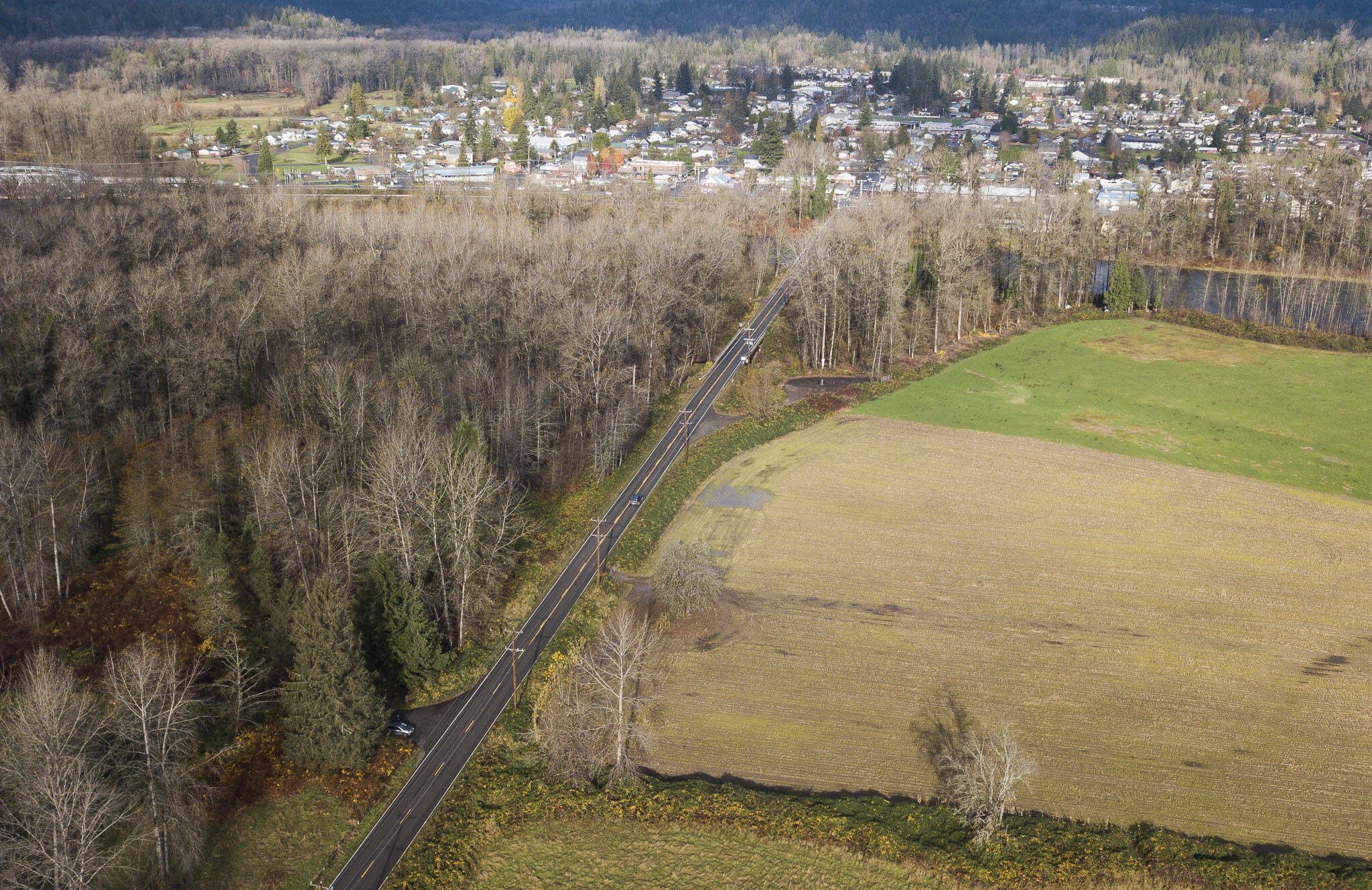SULTAN — Historically, the Mann Road floodplain across the Skykomish River from Sultan was connected through a network of side channels.
But in the 1960s, people disconnected channels when they began building levees and berms to protect buildings and farms.
A streamlined river means flows are heightened during heavy rain or snowmelt runoff and reduces the number of protected side eddies and marsh area for salmon smolt to mature.
A Snohomish County project funded by the Community Floodplain Solutions program hopes to collaborate with local property owners to restore former channels. County officials shared the latest designs at a meeting last week. But neighbors are wary of the project due to what they see as the county’s lack of communication.
“The county isn’t real good about telling us what’s going to happen,” said Marty Scott, a retiree who lives on Mann Road. “They don’t communicate the way they need to for people out here.”
“I commit to getting this information out to anybody,” Snohomish County senior habitat specialist Brett Gaddis. “Feedback and input is really important.”
In 1999, Chinook salmon were added to the Endangered Species Act. Six years later, Shinglebolt Slough was identified as a potential restoration area. The future project site is opposite the banks of downtown Sultan, where Mann Road crosses the river.
County officials have reached out to a handful of landowners in the slough, hoping to acquire space to re-braid channels and river, simultaneously creating salmon habitat and reducing flood risk.
The Federal Emergency Management Agency considers hundreds of parcels along the Skykomish River as “repetitive loss” properties, meaning that owners file insurance claims for flood damage more than a couple times a decade.
Many of those parcels are also in a floodway restricted area, so people aren’t allowed to modify their properties even if modifications could reduce flood damage.
Owners “have a challenging real estate situation,” Gaddis said.
But with money from the county’s Conservation Futures program or grants, the county can offer to buy property and promise land will be restored for habitat.
Gallagher Wilson, a homeowner along Mann Road, said he got a letter from the county in March asking to buy his family’s property.
Wilson said he’s talked with Gaddis before, and the habitat specialist has been helpful talking through some of the county’s work. But when he looked online to research more about the Shinglebolt Slough project, he found documents full of scientific jargon.
“A lot of it’s fairly technical. It’s hydrological surveys and maps,” he said. “If you’re just an average person, it’s hard to decipher what any of that means.”
Steve Scott echoes the sentiment, saying the county needs to break down their work into layman’s terms, so those affected can understand the work and their options.
The county sent 900 mailers to properties surrounding Shinglebolt Slough to invite residents to a public meeting. Gaddis said the county plans to finalize designs and apply to permits early next year. He expects bidding for construction contracting to begin in 2027.
To stay up to date, sign up for email notifications. Links to email sign-ups can be found on the county Department of Conservation and National Resources website and the Shinglebolt Slough project website.
Correction: A previous version of this story misstated the contents of 900 mailers the county sent to property owners.
Eliza Aronson: 425-339-3434; eliza.aronson@heraldnet.com; X: @ElizaAronson. Eliza’s stories are supported by the Herald’s Environmental and Climate Reporting Fund.
Talk to us
> Give us your news tips.
> Send us a letter to the editor.
> More Herald contact information.

























